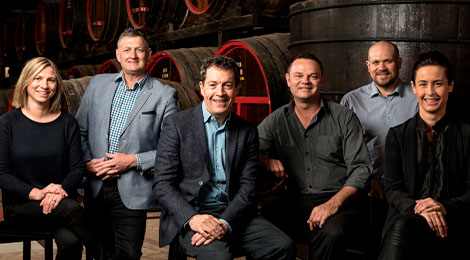Bin 23 Pinot Noir 2020
Penfolds
Bin 23 Pinot Noir 2020
Overview
Overview
Bin 23’s name is derived from the place the wine matures, ‘Cellar 23’ at Magill Estate and follows in the footsteps of the success and development of the Penfolds Cellar Reserve Pinot Noir. Penfolds Bin 23 Pinot Noir 2020 is a bold and dynamic inclusion to the Penfolds red wine stable – reflecting an evolving style, regional definition and the complexities of the many and varied pinot noir clones. The relationship between Penfolds and cool-climate regions continues with the multi-regional sourcing of Bin 23 Pinot Noir.
| Varietal | Pinot Noir |
|---|---|
| Vintage | 2020 |
| Country | Australia |
| Volume | 750 mL |
| Closure | Screw Cap |
| Alc/Vol | 13.5% |
| Peak Drinking | Now-2026 |
Awards and Accolades
Awards and Accolades
| 94 Points | Tyson Stelzer |
| 94 Points | James Halliday |
| 93 Points | Huon Hooke |
| 92 Points | David Sly - Decanter |
| 92 Points | Ken Gargett - World of Fine Wine Magazine |
| 90 Points | Andrew Caillard |
| 17.5 Points | Matthew Jukes |
Tyson Stelzer
" Bin 23 has defined itself as a true pinot noir rather than just another Penfolds red, and if 2019 declared it, 2020 confirms it. Leading out with juicy, spicy, engaging berry fruit purity, it pulls into a finely textured tail of herbal intrigue and intricately assembled, fine-grained, mineral tannin structure. Poached strawberries, fresh morello cherries and just-plucked raspberries declare a magnificent and alluring profile, underlined by nuances of rose hip and a glimmer of exotic spice from judiciously played whole bunch fermentation. "
Ken Gargett
"Always a wine which attracts a lot of interest. Seems to be something outside the Penfold's field of expertise and yet so often, comes up trumps. Some spicy oak here – a fraction too much at the moment but give it time. Florals, spices, chocolate, black cherries, dry herbs. This is a big and full-flavoured style of Pinot. Nothing wrong with that. A very fleshy style. For me, this is Pinot for Shiraz lovers. Grippy tannins, real concentration, firm with decent length. If you like this style then your score would be very high indeed; if you prefer more grace and elegance, then perhaps not so much. "
Andrew Caillard
"Fresh strawberry, red cherry, cola aromas with herb garden notes. Well concentrated minerally style with pure strawberry, red cherry chinotto, hint roasted walnut flavours, fine slinky textures, attractive mid-palate viscosity and integrated fresh acidity. Finishes chalky and minerally. A lightly structured pure-fruited Pinot Noir with plenty of varietal definition and freshness. Modest in score but authentically Penfolds. Best for early drinking. Drink Now – 2026."
Taste Description
Taste Description
Nose
An immediate ascent of wild raspberry and strawberry (conserve) pinot fruits. And, a splash of green olive.
Hovering above - floral whiffs to remind of an evening meander in the garden - clusters of daphne, azalea and camellia.
Heirloom roseand saffron scents patiently await recognition.
A dusty/toasty oak reminder of a relatively short sojourn in barrique.
Flavours and Palate
Confidently awakens and complexes in glass.
Varietally-aligned sliced cold lamb flavours and earthy yet subtle forest floor notes.
Strawberry pips, pomegranate and rhubarb … laced with spices – cola and bergamot leading the way. Wettened graphite (from oak?) to a fine edge. In tandem, a pleasing minerality (wet riverstone) complements this pinot’s textural demeanour.
Viticulture Vintage & Winemaking
Viticulture Vintage & Winemaking
Vintage Conditions
Tasmania enjoyed above-average rainfall across the growing season, dominated by a wetter than average February, March and April. The White Hills vineyard near Launceston recorded their highest total April rainfall in 20 years. September and November were cooler than average due to lower minimum temperatures, with only two days above 35°C recorded in January. Harvest was delayed by cool conditions and intermittent rain which made picking the sloping vineyards tricky. The Adelaide Hills experienced an extended dry season. A normal and even budburst occurred in early September 2019 in cool, dry conditions. October was warmer, encouraging vines to accelerate their growth, however a cool November slowed vine phenology and canopy development. The region was hit by devastating fires in December with significant loss of vines. Decent rainfall towards the end of January reduced vine stress just before veraison. Autumn arrived early with long sunny days and cool nights, perfect for finishing off ripening. Henty enjoyed near long-term average annual rainfall and spring temperatures. However, there were some instances of frost in September and October that effected the fruitfulness of the buds. Like other parts of Australia, December was hot and dry, but Henty was spared the fires that troubled other regions. Conditions settled in January, while February was reported as the coldest on record with high humidity due to consecutive days of drizzle. March temperatures were ideal for ripening a small but excellent crop of pinot noir.

The Penfolds Team
Key to the success of Penfolds has been a lineage of visionary winemakers. There have only ever been four Chief Winemakers at the helm of Penfolds – Max Schubert, Don Ditter, John Duval and Peter Gago, each a custodian of a rich winemaking tradition that goes back for more than 170 years.
Our current Penfolds winemaking team has more than 100 years between them as Penfolds winemakers. They are constantly refining and improving their work, whilst honouring the winemaking techniques of their predecessors.
